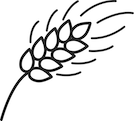Telling the Real Story of Human Trafficking (2 credit hours)
Program Summary: This course explores labor and sex trafficking and highlights the trafficking story arc of 1. recruitment and grooming 2. coercion and control, and 3. exit. Human trafficking patterns, risk factors, and misconceptions are discussed. The course offers language and practice recommendations with a focus on assistance, support, and resilience.
The course includes an analysis of hotline data from January 2020-August 2022.
This course is recommended for social workers and counselors and is appropriate for beginning and intermediate levels of practice.
Reading #1: Getting it Right. Making it Matter. Telling the Real Story of Human Trafficking Publisher: Polaris
Reading #2: Human Trafficking During the Covid and Post-Covid Era Publisher: Polaris
Course Objectives: To enhance professional practice, values, skills and knowledge by highlighting the story arc of human trafficking, common patterns, and practice recommendations.
Learning Objectives: Describe the human trafficking story arc and give examples of recruitment and grooming, coercion and control, and exit. Describe who gets trafficked and why. Describe typical trafficking patterns.
Review our pre-reading study guide.
G.M. Rydberg-Cox, MSW, LSCSW is the Continuing Education Director at Free State Social Work and responsible for the development of this course. She received her Masters of Social Work in 1996 from the Jane Addams School of Social Work at the University of Illinois-Chicago and she has over 20 years of experience. She has lived and worked as a social worker in Chicago, Boston, and Kansas City. She has practiced for many years in the area of hospital/medical social work. The reading materials for this course were developed by another organization.





